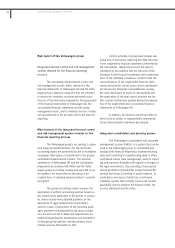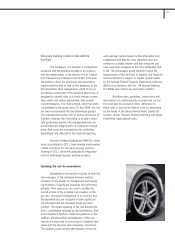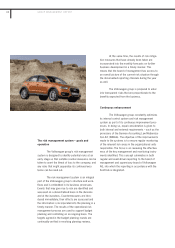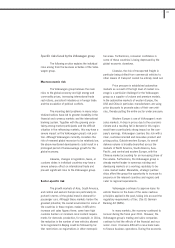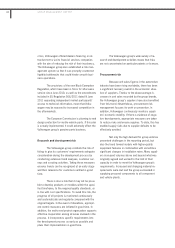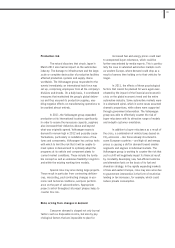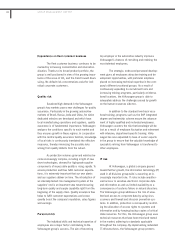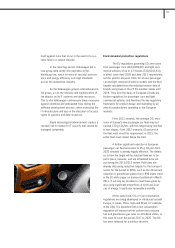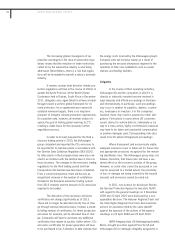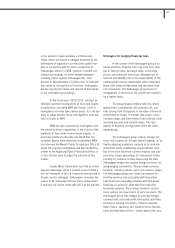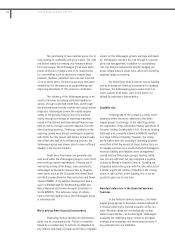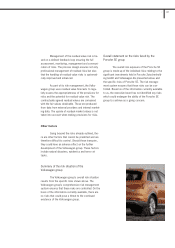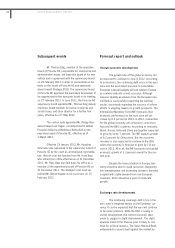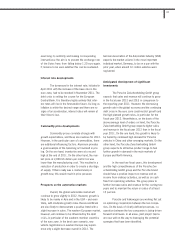Porsche 2011 Annual Report Download - page 126
Download and view the complete annual report
Please find page 126 of the 2011 Porsche annual report below. You can navigate through the pages in the report by either clicking on the pages listed below, or by using the keyword search tool below to find specific information within the annual report.
The purchasing of raw materials gives rise to
risks relating to availability and price trends. The risks
are limited mainly by entering into forward transac-
tions and swaps. The Volkswagen group uses appro-
priate contracts to hedge some of its requirements
for commodities such as aluminum, copper, lead,
platinum, rhodium, palladium and coal over a period
of up to seven years. Similar transactions have been
entered into for the purpose of supplementing and
improving allocations of CO2 emission certificates.
The solvency of the Volkswagen group is en-
sured at all times by holding sufficient liquidity re-
serves, through confirmed credit lines and through
the tried-and-tested money market and capital market
programs. Volkswagen covers the capital require-
ments of the growing financial services business
mainly through borrowings at matching maturities
raised in the national and international financial mar-
kets as well as through customer deposits from the
direct banking business. Financing conditions in the
reporting period were almost unchanged compared
with 2010. For this reason and thanks to the broadly
diversified structure of its refinancing sources, the
Volkswagen group was always able to raise sufficient
liquidity in the various markets.
Credit lines from banks are generally only
ever used within the Volkswagen group to cover short-
term working capital requirements. Projects are fi-
nanced by, among other things, loans provided to
Volkswagen at favorable interest rates by develop-
ment banks such as the European Investment Bank
and the European Bank for Reconstruction and Devel-
opment (EBRD), or by national development banks
such as Kreditanstalt für Wiederaufbau (KfW) and
Banco Nacional de Desenvolvimento Econômico e
Social (BNDES). This extensive range of options
means that the liquidity risk to the Volkswagen group
is extremely low.
Risks arising from financial instruments
Channeling excess liquidity into investments
gives rise to counterparty risk. Partial or complete
failure by a counterparty to perform its obligation to
pay interest and repay principal would have a negative
impact on the Volkswagen group’s earnings and liquid-
ity. Volkswagen counters this risk through its counter-
party risk management. In addition to counterparty
risk, the financial instruments held for hedging pur-
poses hedge balance sheet risks, which are limited by
applying hedge accounting.
By diversifying when it invests excess liquidity
and by entering into financial instruments for hedging
purposes, the Volkswagen group ensures that it re-
mains solvent at all times, even in the event of a
default by individual counterparties.
Liquidity risk
A downgrade of the company's rating could
adversely affect the terms attached to the Volks-
wagen group’s borrowings. In the reporting period,
the acquisition of the automobile trading operations of
Porsche Holding Gesellschaft m.b.H. (Porsche Holding
Salzburg) and a majority interest in MAN SE resulted
in a large outflow of liquidity. However, the strong
performance from the company’s operating business
more than offset the impact of these transactions on
its liquidity position, as a result of which Volkswagen’s
financial stability and flexibility were strengthened
overall and the Volkswagen group’s existing rating
was not only affirmed, but also assigned a positive
outlook by Moody’s Investors Service. Creating the
integrated automotive group with Porsche will result in
a further significant outflow of liquidity in the coming
years. In light of the current liquidity, this is not ex-
pected to give rise to any risks.
Residual value risk in the financial services
business
In the financial services business, the Volks-
wagen group agrees to buy back selected vehicles at
a residual value that is fixed at inception of the con-
tract. Residual values are set realistically so that
market opportunities can be leveraged. Volkswagen
evaluates the underlying lease contracts at regular
intervals and recognizes any necessary provisions if
any potential risks are identified.
GROUP MANAGEMENT REPORT126


